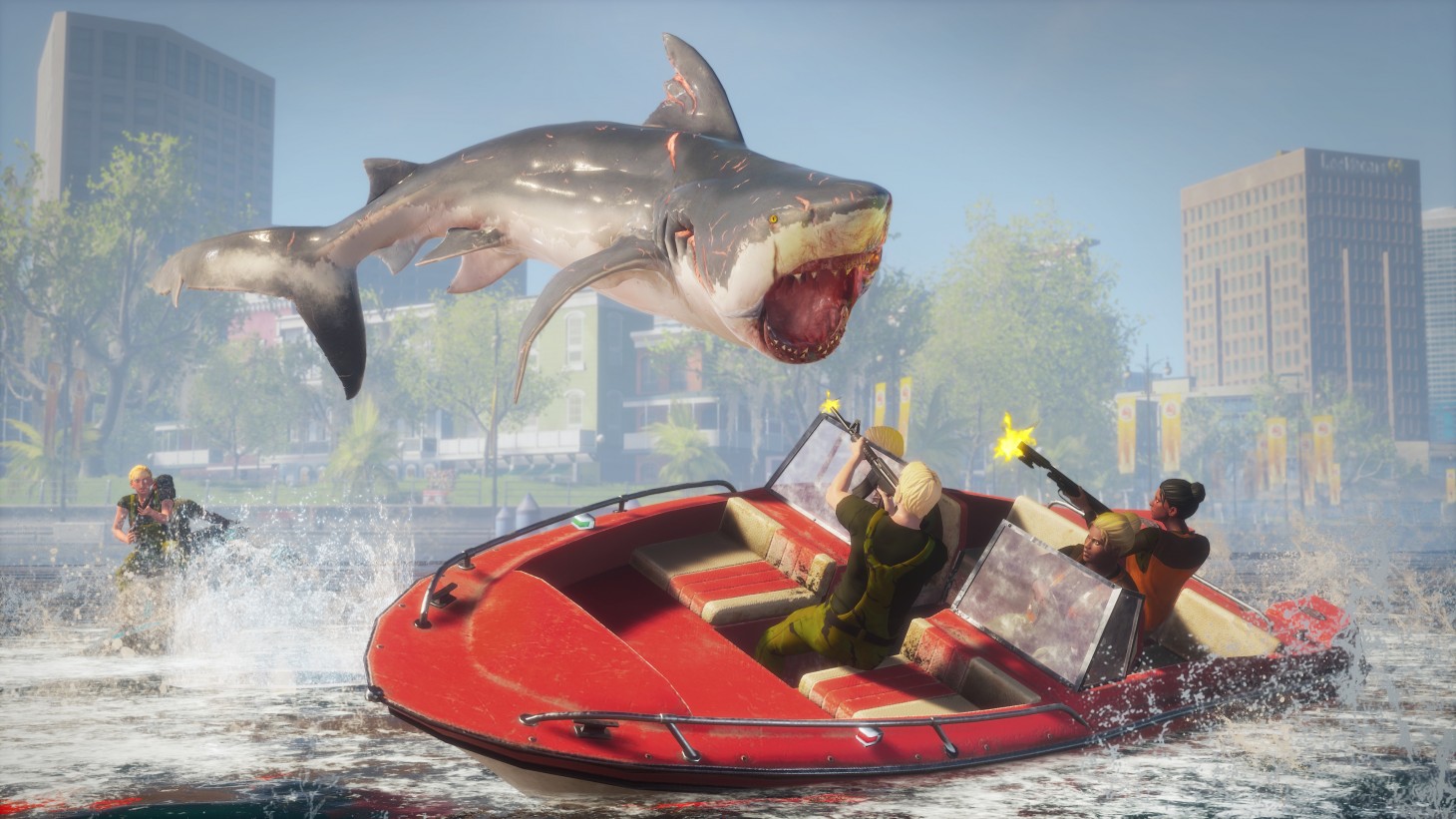Share
Halo Infinite is set to release later this year and the weight of the series has never felt heavier. It’s the eighth main game in the series, the final chapter in the Reclaimer Trilogy, and it’s also the twentieth anniversary of the series with Halo: Combat Evolved, which captivated the video game world in 2001.
It’s been twenty years since Microsoft’s first home console made its fierce and fiery debut against the Sony PlayStation 2 and Nintendo GameCube, and the competition between the three companies has forever changed the industry. Microsoft made sure Xbox had all the power it needed to hold its own against Sony and Nintendo — and then some.
DirectX Box
The system came equipped with a custom Intel processer capable of producing 116.5 million polygons per second at a resolution of 1920 x 1080. It contained an internal 8-gigabyte hard drive, which was beyond overkill in 2001; downloadable content and game updates weren’t even part of video games yet so that storage space just gave everyone a reason to never delete their saved game data ever again. The Xbox contained 256 auto channels capable of working with surround sound or stereo equipment and it came packed with 64 megabytes of unified DDR SDRAM. Xbox may have been the new box on the block but it came ready to run hits launch titles like Tony Hawk’s Pro Skater 2x, Dead or Alive 3, Fusion Frenzy, Project Gotham Racing, and uh, well, Halo: Combat Evolved, which was the real reason everyone was picking up an Xbox. And Microsoft knew it too.

The original Xbox was a powerful machine but that power came at a price. The system’s launch price was $299.99 USD, which was a hundred bucks more than the GameCube’s launch price and the same price as a PS2. A lot of people had already made their minds up and picked a game system. The later release timeframe meant Xbox had to really convince people to throw three hundred more dollars at another box dedicated to games for their house. And Xbox didn’t have Metal Gear Solid 2: Sons of Liberty, Devil May Cry, or Final Fantasy X. Instead it had a huge controller that most people weren’t sure about, and Halo: Combat Evolved, which ultimately proved to be just enough to keep their heads above water. If it weren’t for Bungie’s first Halo title, Xbox wouldn’t be what it is today and there very well may not have been an Xbox 360, Xbox One, or even Xbox Game Pass and xcloud. It all started with Halo: Combat Evolved.
Xbox eventually had more games, including some huge exclusives, like Star Wars: Knights of the Old Republic, The Elder Scrolls III: Morrowind, Doom 3, and Microsoft’s own Fable, but the mysterious sci-fi epic featuring Master Chief, Cortana, and the relentless (and intelligent!) alien forces known as the Covenant are what put the Xbox’s capabilities on the front stage of the world. Everyone quickly brought an Xbox and Halo into their homes after seeing Master Chief in action in commercials or from the comfort of a friend’s couch, which gave Microsoft the time it needed to piece together additional reasons to wield the power of X.

Halo started life much differently than the intense and story-focused first-person shooter it eventually became. In an interview with Official Xbox Magazine Jaime Griesemer, the lead designer of Halo: Combat Evolved, said, “At the beginning of Halo’s development there was a team of five or six working on a PC sci-fi RTS similar to Myth, one of our previous games. Three years later there were 35 or 40 people working on an FPS for Xbox.”
Halo originally started as a real-time strategy game with an isometric perspective in 1997 before transforming into a third-person shooter by 1998. Steve Jobs revealed Halo to the world at the 1999 Macworld Conference & Expo, along with an announcement that Halo would be releasing simultaneously on MacOS and Windows. By June 2000, Bungie had been acquired by Microsoft and Halo was a first-person shooter releasing less than two years later. Halo was going to be Microsoft’s flagship launch title for Xbox, and in a much bigger way than Xbox had previously intended.
Bill Gates had just announced Xbox in a presentation at the Game Developers Conference on March 10, 2000, and months later, Bungie was faced with the exciting but stressful reality that Halo was happening but that it would be releasing in November 2001. The game transformed from an idea built around exploring an alien world to a first-person shooter featuring a crash landing on that very same world, and it had to on store shelves in seventeen months.

Development on Halo was rough, chaotic, and not without casualties. Bungie scrapped other projects, throwing every person and resource at Halo in order to finish it on time. Bungie even cut planned features and ideas from the game to make sure it was finished on time. A few years earlier Bungie planned to have an open-world game with terrain that changed from combat and explosions. Persistent environmental features, like spent bullet casings and a changing weather system, were also cut, along with the team’s ambitious plans for a longer campaign.
Bungie trimmed corners they could afford to smooth over and some employees even took to sleeping in the office to make sure Halo shipped on time. The team poured all of their energy into making everything work and play as well as they could. The multiplayer mode was even rebuilt a few months before release because the team didn’t think what they had was fun.
The team’s hard work was ultimately rewarded by the success of Halo: Combat Evolved with game sales consistently rising each and every week. In an interview with Vice, lead designer Jaime Griesemer said, “People forget that Halo wasn’t a chart-burner right off the bat. I’m not even sure it was the best-selling launch title. But it had this insanely long tail, where every week the Xbox would sell a certain number of units and something like 50 percent of those sales would convert into Halo sales. So it just kept selling. Two years after it came out, it was still in the top 10 sellers on the console. That’s almost unheard of now.”

Halo was inescapable. It was everywhere. It received near-universal praise from critics and received countless awards from publications. The story mode featured exciting science-fiction fantasy and exploration on alien planets and aboard spaceships mixed with intense firefights between the player-controlled Master Chief against endless Covenant enemies, along with a multiplayer mode that no one could put down.
The game didn’t have an online multiplayer mode since Microsoft shipped the Xbox before their online service, known as Xbox Live, launched. Halo did have an offline multiplayer mode though where up to four players could take each other on in competitive deathmatches and combat-filled versions of Capture the Flag. Players could also connect up to four Xbox consoles with Ethernet cables though, which brought the maximum player count up to sixteen. And that’s exactly what people did.
People loaded up Xbox systems, controllers, and TVs into their car to hook it all up at a friend’s house for Halo: Combat Evolved LAN parties. Word-of-mouth advertising kept game sales moving because of the game’s social component. Online gaming hadn’t quite taken off yet but that didn’t matter for Halo. Houses and venues were filled so groups could all experience the action and camaraderie of Halo multiplayer. The craze only continued with the sequels and other franchises that grew with Halo, like Call of Duty and Battlefield.

The game’s legacy endures decades later with a style and presentation that are undeniably good. Despite the lower detail on textures and limited lighting, Halo: Combat Evolved is still an astonishing adventure. From the very beginning, Bungie communicates what’s at stake before linking the player with Master Chief, and unleashing them on the distressed Pillar of Autumn. Covenant forces consisting of small and green grunts along with tall and blue elites have forcefully boarded the ship and they’re attacking everyone and everything while they move through the ship. The Pillar of Autumn’s captain, Jacob Keyes, orders for Master Chief, a cyborg super-soldier in cryosleep, and Cortana, the ship’s advanced AI, to stop the Covenant and prevent them from discovering any information on Earth, including its location.
Immediately the stress to succeed is placed on players. Master Chief and Cortana need to grab a gun and stay alive. Things change and so does the mission after the ship’s surviving crewmembers crash aboard the mysterious ringworld below. This is when the mystery and wonder start to reveal themselves in Halo and they continue unfolding alongside the intense firefights and exciting exploration across a variety of locations. Outside of a few low points, including some repetitive sections and difficulty spikes, Halo was a masterpiece and it continues to be nearly twenty years later. The iconic soundtrack from Martin O’Donnell drives the action and mystery forward with Gregorian chants and emotional percussion and strings. The music constantly reminds players what they have to lose and why Master Chief and Cortana must succeed.

Halo’s popularity as a series has changed with time like anything but it’s still an important franchise that’s earned its legacy and impact on video games. And while fans may not always agree on which game in the series is the best, they recognize the importance of Combat Evolved and its contributions to the series as a whole. 343 Industries continues to carry the original vision, with there being a bigger focus on surroundings and open-world elements in the upcoming Halo Infinite, along with an artistic direction that seems to call back to that original style from twenty years ago.




